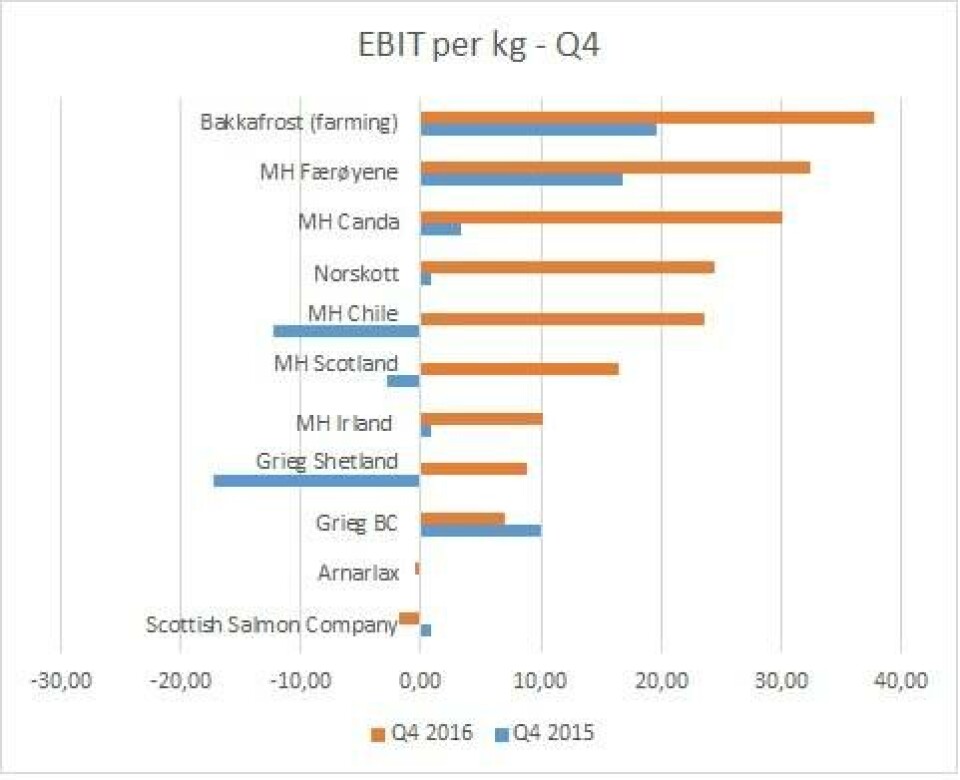
Mixed fortunes for listed firms
A comparison of foreign salmon producers listed on the Oslo Stock Exchange shows a wide a wide range of results in Q4.
Faroese firm Bakkafrost reported the best figures, with an EBIT/kg of NOK 37.70 (£3.63).
“Farming and animal feed segments have had very good results, while the VAP segment had it tougher in 2016,” said Bakkafrost’s CEO Regin Jacobsen.
Even with good results, they say that lice have required a lot of work and – thanks to the new Faroese regulations on sea lice control – they expect operating costs to increase. A further problem they’ve had to deal with stems from a positive test for ISA in 2016 and another in 2017 – the latter resulting in the premature harvest of two cages.
The worst performing foreign listed producer was The Scottish Salmon Company (SSC), with an EBIT/kg of - £0.17.
“The industry's widespread biological challenges and mortality continued to affect harvest volumes and resulted in an increase in production and operating costs by 15% in the quarter,” stated their Q4 report.
CEO, Craig Anderson, said that they were struggling with both lice and gill health, which has affected harvest volumes in several ways.
"Performance has remained stable but we recognise that the effects of recent health issues have impacted on our projected growth in the short term. Taking into account the consequences of the current biological challenges, we are now guiding harvest volumes of 25,000 tonnes volumes for 2017,” he said.
However, other operators in Scotland - in particular Scottish Sea Farms (Norskott Havbruk) - performed very well, while Grieg Seafood Shetland showed the greatest improvement in comparison with Q4 2015.
Icelandic appearance
A relatively new company to feature in the quarterly presentations is the Icelandic firm Arnarlax, whose results were reported through SalMar, which now owns 34% of the shares.
Arnarlax slaughtered their first salmon in 2016 and the total harvest volume ended at 4,000 tonnes. Total revenues for 2016 were NOK 247.4 million, resulting in a loss of NOK 1.7 million.
The report reveals: “The result is affected by the high cost of the first-generation production, with long production times, relatively high mortality and high processing and logistics costs. In addition, the results were affected by non-recurring costs associated with the acquisition of Fjardalax.”
However, they have high expectations for the year ahead, and towards the end of 2016 the company began slaughtering a new production generation (fish put to sea in 2015).
“This generation has significantly lower production cost. For 2017 the company expects to harvest around 10,000 tonnes of salmon,” they write.






















































